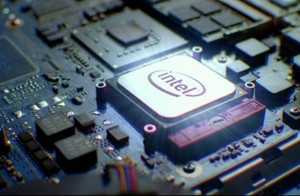[이코노믹리뷰=최진홍 기자] It is known that after Intel gave up 7nm process production, it is negotiating commissioned production with one of Samsung Electronics and TSMC. It is discussing with one of Samsung Electronics and TSMC, and there is a forecast that there will be a related announcement within two weeks.

Intel finally stops at 7nm
Bloomberg reported on the 8th (local time) that Intel is negotiating to leave the production of core semiconductor chips produced by 2023 to Samsung Electronics or TSMC. While AMD and Nvidia are being pushed against the wave of waves, traditional partners such as Apple and Microsoft are turning their backs. Intel recently decided to sell its NAND flash division to SK Hynix.
However, Intel’s abandonment of 7nm process production is not a new fact. Intel has already announced that it will almost give up its 7-nano process production, and the roadmap related to this is expected to be thoroughly with foundry partners. In fact, Intel plans to focus on selection and concentration in the line of naturally giving up after delaying the 7-nano production plan.
The industry is paying attention to who will be commissioned to produce the quantity with Intel’s empire twilight. Intel’s supply of’Junchi’, even if it’s hot, is quite large, so if a specific foundry company joins hands with Intel, the plate itself can be shaken.
When Intel gives up 7-nano process production, there are no candidates other than Samsung Electronics and TSMC. This is because, among global foundry companies, only Samsung Electronics and TSMC can digest Intel-level quantities, and Samsung Electronics and TSMC are’Yui’ that can produce 7-nano processes. For that reason, Bloomberg’s report is more natural than Intel’s recent move.
According to foreign media such as Bloomberg, Intel is expected to finalize the consignment production method after consultation with Samsung Electronics and TSMC in the near future. It is said that the consignment production schedule will be confirmed and announced within two weeks. However, it is said that it will take more time to check the specific picture because Intel will push the actual volume to Samsung Electronics and TSMC at least in 2023.

Samsung’s opportunity?
In the industry, it is expected that Intel will drive more volume to TSMC, the number one company in the global foundry market, while providing supplies to both TSMC and Samsung Electronics. This is because TSMC is the No. 1 operator in the global market, and the collaboration with TSMC, which has completely turned to the side of the US government from Intel, a fabless company in the US, is a more natural picture.
In fact, TSMC has started to collaborate with US fabless after blocking transactions with Huawei in China, starting with the expansion of its US plant last year. In that extension, it is absorbing a large number of foundries and is striving to win. Samsung Electronics also succeeded in winning encouraging orders, but the analysis that it is not comparable to TSMC is weighing in. This is why some say that Intel can boost all 7-nano units to TSMC.
However, Samsung Electronics also has a knife.
First of all, from Intel’s point of view, the risk is high if only one foundry company is driven, and Samsung Electronics’ foundry roadmap is also strengthening.
In fact, Samsung Electronics is showing a strong presence by strengthening its foundry presence through Samsung Semiconductor Vision 2030. Samsung Semiconductor Vision 2030 is the big picture of Samsung Electronics to achieve the world’s No. 1 in the system semiconductor field by 2030. The main goal is to invest 133 trillion won in system semiconductors and employ 15,000 people by 2030, focusing mainly on strong drives through foundries.
Samsung Electronics Vice Chairman Lee Jae-yong stood at the vanguard. While playing a leading role in winning orders for a number of foundries such as Qualcomm and IBM, Peter Wennink, CEO and Martin van den Brink, CTO, visited ASML headquarters in Eindhoven, Netherlands last October. We met with others to discuss ways to strengthen cooperation for the development of next-generation semiconductor technology, and also visited a semiconductor manufacturing equipment production plant with the guidance of CEO Burningk along with Vice Chairman Kim Ki-nam of Samsung Electronics’ DS Division to see the EUV equipment production status.
Driving momentum, it bought 258 acres of land near the Austin plant in October last year to strengthen the infrastructure of the local foundry market, and is also exploring various possibilities.

The first schedule this year was set as the foundry site. In fact, Vice Chairman Lee attended a ceremony for bringing in foundry production facilities at Pyeongtaek Plant 2, along with Samsung Electronics Vice Chairman Kim Ki-nam and Choi Si-young, Foundry Business Manager, and reviewed the semiconductor division’s president and mid- to long-term strategies.
Pyeongtaek Plant 2 is a high-tech complex production line that produces DRAM, next-generation V-NAND, and ultra-fine foundry products. After producing memory semiconductors last year, this year, it is bringing in facilities for foundry production. After inspecting the EUV exclusive line, they visited the construction site of the 3rd plant in Pyeongtaek to encourage employees. Vice Chairman Lee Jae-yong said, “Let’s leap to the new Samsung in the new year of 2021. Together, we can open up the future. Let’s cooperate with Samsung Electronics, partners, academia, and research institutes to create a healthy ecosystem and create a myth in system semiconductors.” .
Based on these strategic choices, Samsung Electronics recently established a strategy to closely follow TSMC in the foundry market. Intel has no choice but to give TSMC a generous score, but it is the reason why it is said that Samsung Electronics can sufficiently receive Intel’s favor.
